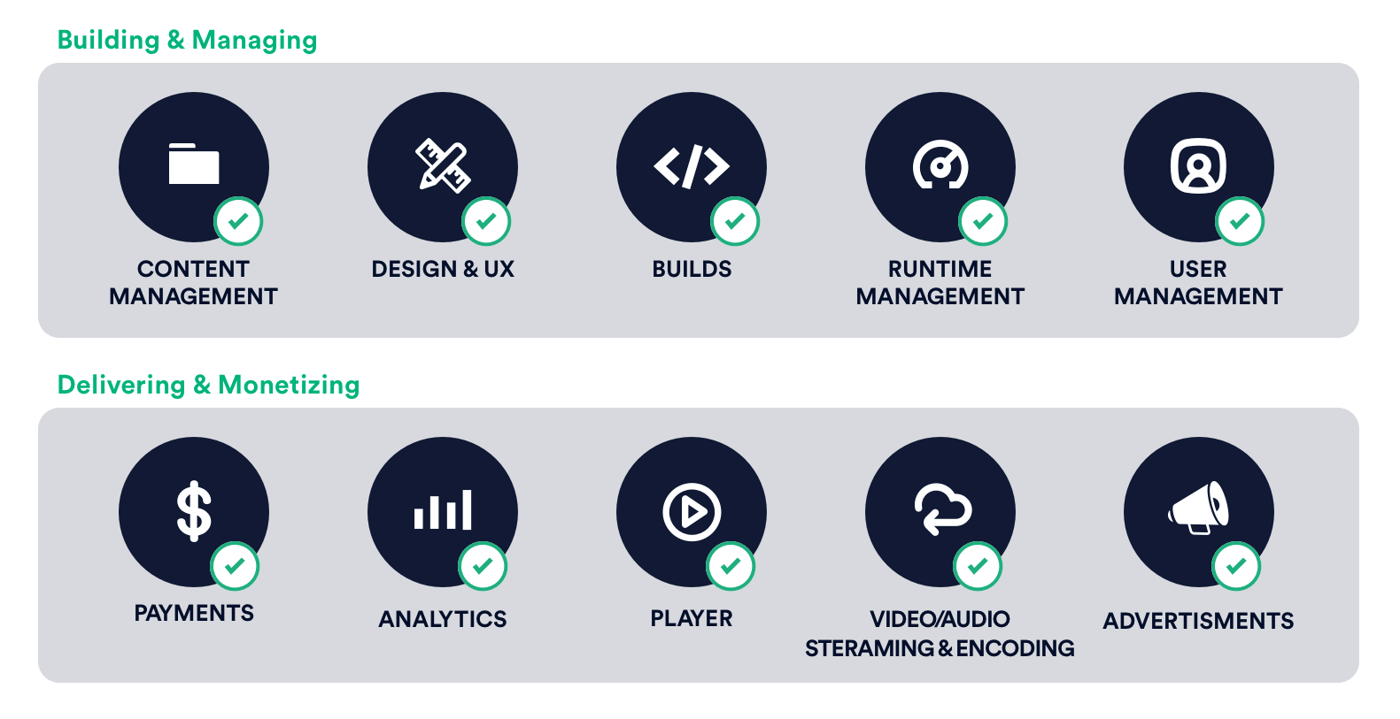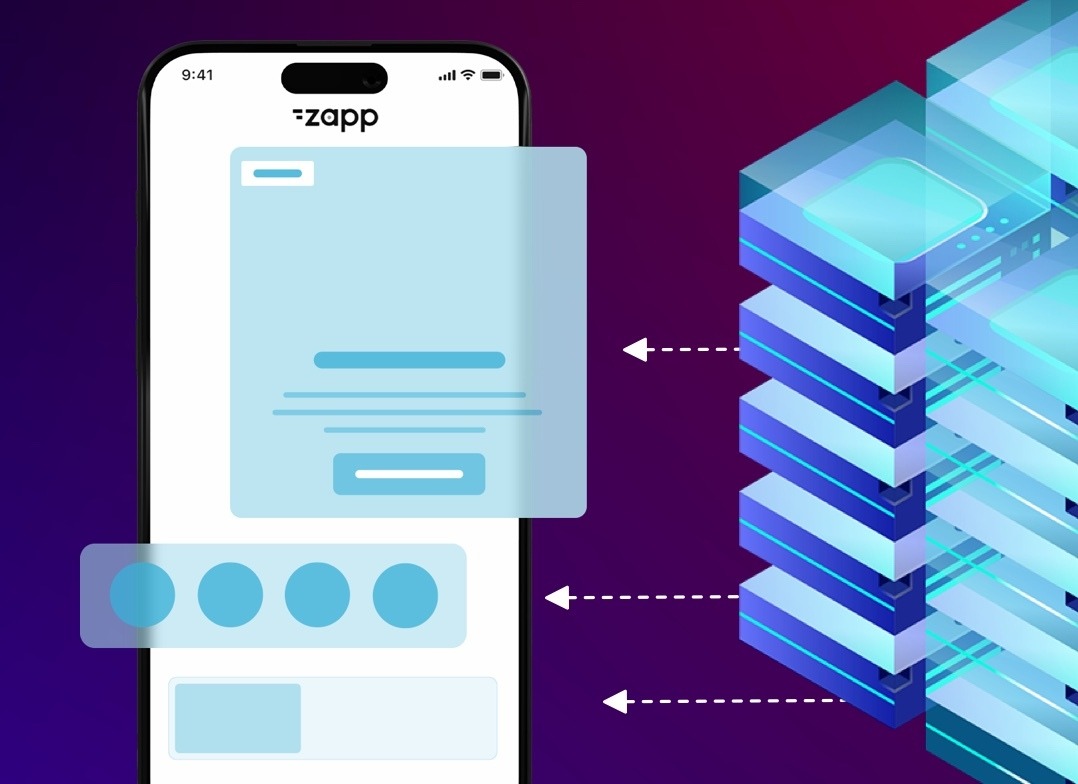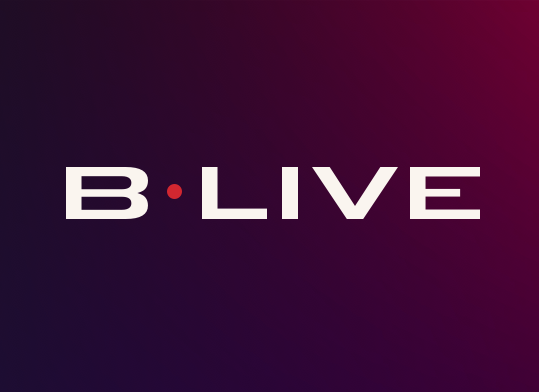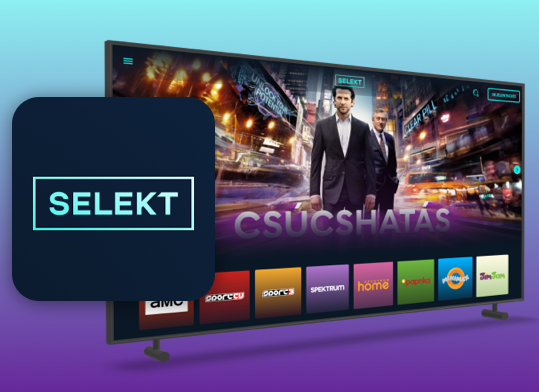When we released our 2022 OTT App Building Guide: The 10 Factors You Can’t Miss, we were focused on helping simplify what can be a complex process. Applicaster’s head of product—Gabriel Guy—and a team of experts wanted to turn their years of experience into an easy-to-understand collection of checklists and recommendations for how to build an OTT app that works for both companies and audiences.
We’ve included a roundup of each of the ten factors from the e-guide below, and a link to download the full PDF with comprehensive checklists for each consideration. Have questions or feedback? Let Gabriel and his team know what you think!
Five Factors for Building and Managing an OTT App
-
Content Management
The right content solution will match your content taxonomy to streamline operations. While sometimes an OTT app can be built from video collections or playlists, in most cases it won't be enough. An ideal solution arranges content in specific hierarchies that make the most sense for users, like series and seasons.
-
Design & UX
When it comes to OTT app design and UX, pay attention to industry standards but respect your own company’s unique users, content, and brand. User experience and design are crucial to user satisfaction, so keep up with current trends while building strong brand awareness. It’s just as important as the actual content you provide. For more tips, see our Ultimate UX Guide.
-
Builds
OTT apps work differently than web portals. Since media companies need to maintain versions of their apps across multiple platforms, build operations should be as streamlined and automated as possible.
-
Runtime Management
Audience preferences and trends are incredibly dynamic, so successful OTT apps require the ability to easily and quickly change content and reorder content priorities. UX is one of the most critical factors determining app traction and utilization (and therefore the ability to make adjustments) and should be at the center of each decision.
-
User Management
User management is often tied to the SVOD model, as users have already provided their personal information. Focus on user satisfaction and privacy to build a loyal base and better service for customers.
Five Factors for Delivering and Monetizing an OTT App
-
Payments (SVOD & TVOD)
When building your payment plans, pay attention to operational costs, geography, and genres. The days of complete dependence on ads for monetization are over, with the rise of social media networks lowering ad revenue and regulations preventing easy user targeting. Ads are still vital to an effective strategy, but media companies should prioritize hybrid solutions that include paid subscriptions.
-
Analytics
Measuring app and player usage allows for major content and user experience improvements. These analytics should guide decision-making, both for confirming business assumptions and tracking business goals.
-
Player
Users want players to be familiar and intuitive, with big industry names like Netflix and YouTube setting the bar for how a player should work. Media companies should pick a player and player features that prioritize the user’s viewing experience and meet their expectations and needs.
-
Video/Audio Streaming & Encoding
Stream delivery is at the heart of every OTT app. Choosing the right provider and features is one of the most important decisions that a media company can make to securely serve quality streaming experiences.
-
Advertisements
Optimize monetization by balancing ads and quality content. Although ad-tech is in a current state of disruption and it can be challenging to predict a long-term business model, ads still need to be considered when monetizing your product.
Download the full 2022 OTT App Building Guide: The 10 Factors You Can't Miss to find the checklists and recommendations for each of these factors.
Download here:




